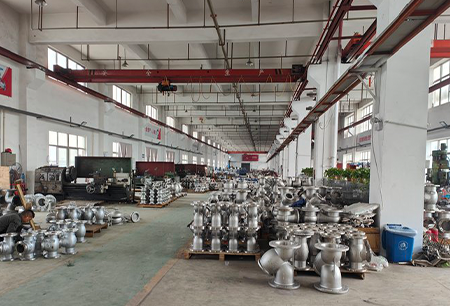Needle Valve with Actuator - Precision Flow Control Solutions
Understanding Needle Valves with Actuators A Comprehensive Overview
Needle valves are essential components in various fluid control applications, characterized by their ability to regulate flow rates precisely. When integrated with an actuator, needle valves enhance their functionality by allowing for remote or automated control, making them indispensable in many industrial and engineering applications.
What is a Needle Valve?
A needle valve consists of a slender, pointed needle-like plunger that fits into a conical seat. This design enables a fine and precise adjustment of flow rates, making it an ideal choice for applications where delicate flow control is necessary. Needle valves are primarily used in systems that involve gases and liquids under low to moderate pressure, as they can manage small flow rates effectively.
The construction of needle valves typically includes materials such as brass, stainless steel, or plastic, chosen based on the specific requirements of the application, including chemical compatibility and temperature resistance.
The Role of Actuators
An actuator is a mechanical device that converts energy into motion, allowing for the control of valves remotely or automatically. In the context of needle valves, actuators can be electric, pneumatic, or hydraulic. Each type has its advantages, but all aim to enhance the responsiveness and efficiency of flow control systems.
Combining Needle Valves with Actuators
needle valve with actuator

The integration of an actuator with a needle valve offers several advantages. This combination not only allows for precision control over flow rates but also improves safety and efficiency in system operation. By automating the control process, it reduces the risk of human error and allows for real-time adjustments based on system feedback.
Electric actuators are particularly popular for their ease of installation and compatibility with modern control systems. They can be programmed to respond to varying conditions, making it possible to maintain optimal flow rates effortlessly. Pneumatic actuators, on the other hand, are favored in environments where quick actuation is necessary, offering rapid response times for applications involving gases.
Applications in Industry
Needle valves with actuators find applications across various sectors, including chemical processing, pharmaceuticals, water treatment, and oil and gas. For example, in chemical processing, precise control of flow rates is critical to ensure that reaction conditions are maintained without exceeding safe limits. In such situations, the combination of a needle valve and an actuator allows operators to adjust flow dynamically, depending on the reaction's progress.
In the water treatment industry, these valves are used to regulate the flow of chemicals and ensure the correct dosage for effective purification processes. By automating this process, facilities can enhance monitoring and control, leading to improved operational efficiency and compliance with environmental standards.
Conclusion
Needle valves with actuators represent a significant advancement in flow control technology. By harnessing the precision of needle valves and the power of automated actuators, industries can achieve enhanced efficiency, safety, and responsiveness in fluid management systems. As technology continues to evolve, the integration of advanced controls with traditional valve technology will likely lead to even more innovative applications and solutions, making this combination a crucial element in modern industrial operations.
-
Breakthrough in Domestic Low Temperature Valve Technology in ChinaNewsAug.18,2025
-
From Machinery to Intelligent Brain: The Digital Transformation Wave of the Valve IndustryNewsAug.18,2025
-
PCVEXPO 2025NewsAug.18,2025
-
The Key to Fluid Control: Exploring the Advantages of Ball Valves in Industrial SystemsNewsJul.09,2025
-
The Versatile World of 1, 2, and 3 Piece Ball ValvesNewsJul.09,2025
-
Stainless Steel Ball Valves: The Ideal Choice for Efficient Flow ControlNewsJul.09,2025
-
Optimizing Fluid Control with Ball Float ValvesNewsJul.09,2025




